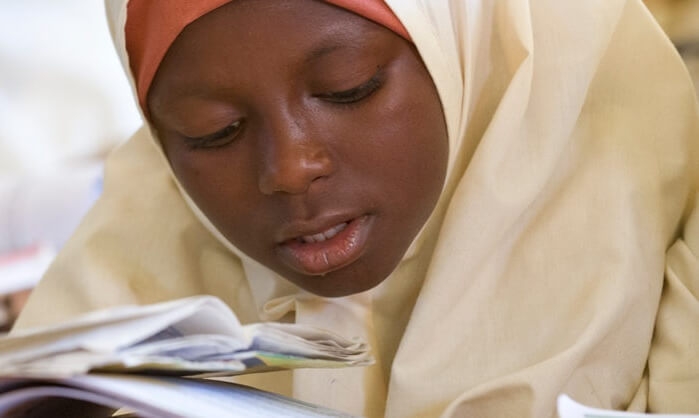 FILE PHOTO[/caption]
FILE PHOTO[/caption]
The U.S. Agency for International Development (USAID), has launched the distribution of 300,000 textbooks to help improve the reading skills of children in nearly 900 schools in Sokoto state.
In a ceremony at Buhari Model Primary school in the Tambuwal local government area, USAID Mission Director, Mr. Michael Harvey was joined by Dr. Mohammed Kilgori, Commissioner of Education to present the books.
In a statement by the U.S embassy in Abuja, Harvey said the event that “Every child deserves quality basic education. The United States is proud to partner with the Government of Sokoto to invest in the future of children who will grow to make a positive contribution in their communities.”
Advertisement
The distribution is part of a Memorandum of Understanding (MOU) between USAID and Sokoto state, signed in 2016.
The agreement commits the state to increasing budget allocations to improve basic education, while USAID will provide technical assistance and support towards the goal of improving education for children and more effective and efficient management of the entire education system.
“We remain committed to investing in the future of our children through education, and the U.S government is a worthy partner in this vision,” said Dr. Kilgori.
The books were developed by more than 100 local and international experts and contain stories and pictures that promote positive social values.
Advertisement
They are written in Hausa for levels P1 and 2 and transition to English at level P3.
USAID is creating more opportunities for out-of-school-children in Nigeria to access education and boost the literacy level of more than two million children and youth through its Northern Education Initiative Plus project.
The five-year initiative seeks to reach 1.6 million children in grades P 1-3, along with more than 500,000 out-of-school-children and youth attending some 11,000 community learning centers.
The program will train and equip around 45,000 teachers and learning facilitators who can reach children in schools and non-formal learning centers.


